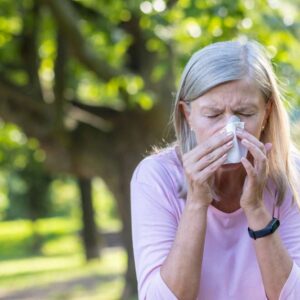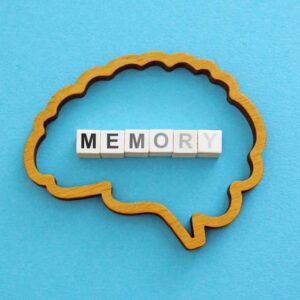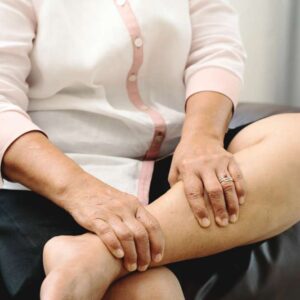
New Alzheimer's Test Offers Cheap, Accurate Results
- Groundbreaking new Alzheimer’s research gets good results without invasive procedures
- Discover how bad-tasting food inspired researchers to design this simple test
- Leave hefty medical bills behind! This test can give you valuable results with a tiny price tag. Find out more…
Dear Living Well Daily Reader,
What’s that smell?
If you answered chocolate, coffee or cinnamon, then your brain may be in good shape.
You see, a new study done by Columbia University Medical Center shows that medical professionals could one day screen patients for Alzheimer’s through smell tests.
To be more exact, the ability to identify familiar smells like the ones listed above is a sign of a healthy brain.
In contrast, research shows that folks who are 60 years or older and unable to identify common smells in an odor detection test are more likely to already be experiencing memory and thinking problems or will eventually develop them.
And the results are shockingly accurate, noninvasive and, best of all, cheap.
![]() Scratch ’N’ Sniff
Scratch ’N’ Sniff
Current testing methods for the earliest stages of Alzheimer’s include PET scans and spinal taps. Not only are these tests uncomfortable, but they can also be very expensive, due to the fact they often aren’t covered by insurance.
But this new test, called the University of Pennsylvania Smell Identification Test, or UPSIT, may change that.
According to Columbia neurologist Dr. William Kreisl, “The whole idea is to create tests that a general clinician can use in an office setting. It’s basically a set of cards. And each card has a little scratch-and-sniff test on it.”
The cards have familiar odors like licorice, coffee, chocolate and cinnamon.
The data from the study indicate that folks who aren’t able to identify the odors are three times more likely to experience memory issues than others.
But even more amazing — this simple sniff test “was able to predict memory decline in older adults about as well as the PET scan or spinal tap,” reports Kreisl.
The test was inspired in part by a common patient complaint observed by doctors — bad-tasting food. Alzheimer’s patients often complain that food doesn’t taste good. This is due to the fact that these patients have lost the ability to smell their food.
Kreisl says this isn’t surprising since odors from the nose are processed in a portion of the brain that is first to fall victim to Alzheimer’s.
While these tests have proven themselves to be helpful tools, they aren’t perfect yet. Other brain disorders can also affect your sense of smell: things like smoking, normal aging and head injuries.
But in most cases, this new sniff test will offer a cheaper and more comfortable diagnosis.
“The UPSIT can be performed in an office setting very easily, takes about 20 minutes to perform, it’s a 40-item test, costs $20 to buy the kit,” Kreisl explained.
To further their research, doctors hope to follow volunteers without dementia to see how early the sniff test can predict the onset of Alzheimer’s.
As of now, it seems the sniff test is still in its developmental stages and not widely available. However, with further research, this tool may one day be the easiest and most affordable diagnostic test for Alzheimer’s.
Live well,

Natalie Moore
Managing editor, Living Well Daily
Sources
[2] A Sniff Test For Alzheimer’s Checks For The Ability To Identify Odors
[3] UPSIT ‘Smell Test’ Could Aid In Early Detection Of Alzheimer’s
Written By Natalie Moore
Natalie Moore is a dedicated health researcher with a passion for finding healthy, natural, and science-based solutions. After a decade of direct healthcare experience in western and natural medicine, she was involved in public health research before joining Living Well Daily.
View More Free Articles
Doctor-Approved Method to Ditch Blood Pressure Meds
In a world where drug solutions dominate healthcare, it’s refreshing to discover that best remedies sometimes don’t involve a single pill. A groundbreaking study shows simple relaxation techniques could be your secret weapon against one of America’s deadliest health conditions. Best of all? It’s free, easy to start right away—and your results are bound to...
Trouble Hearing? Your Heart Could Be at Risk
With research exploding and data pouring in, scientists are uncovering some weird (and surprisingly helpful) health connections. Today’s odd couple? Hearing loss and heart failure. Turns out your ears and your ticker are more connected than you ever imagined. A major study published in the journal Heart looked at over 164,000 people for nearly a...
Stay Up Late? It Could Destroy Your Mental Health
If you dread mornings but come alive at night, there’s concerning new research you need to know about. A recent study found that “night owls” are at higher risk for depression. But before you rush to set your alarm to get up with the sun tomorrow, there’s more to the story… Chronotypes are essentially your...
Go from Flabby to Fit with this Common Vitamin
If you’re like many of us, you woke up one day, looked in the mirror, and realized you’re no spring chicken anymore. Even worse—when you weren’t paying attention—it seems you somehow misplaced the muscles of your youth and have gone from fit to flabby. Aging has a way of humbling us like that. But scientists...
Seasonal Allergy “Off Switch” Discovered in the GUT
“Doc, why am I suddenly suffering from seasonal allergies when I’ve never had them before?” It’s a question I get all the time—and my answer might surprise you. Stop looking up at the trees—and start looking down at your gut… Your sneezing fits, itchy eyes, and runny nose might have more to do with what’s...
“Canary in the Coal Mine” Test Sniffs Out Brain Issues Early
One of the most common questions I get is how to tell if you’re starting to experience cognitive decline. I get it—losing your memory is scary, especially when it sneaks up on you. But here’s some exciting news that might put your mind at ease. A fascinating new study suggests that your nose might be...
BEAT Stubborn Leg Swelling Without Dangerous Diuretics
“I need help with edema.” —Swollen Hi Swollen, When patients complain of edema—fluid retention that causes feet, ankles, and legs to swell—I explain that, while conventional medicine immediately prescribes diuretic drugs, nature offers us effective solutions we can try first. I’ll share those in just a moment, but first, let’s take a quick look at...
Mental Health Linked to 30% FASTER Aging [6-Step FIX]
Your mind and body are more connected than you might realize—and a groundbreaking new study proves just how profound that connection really is. In fact, it’s this mind-body link that helps explain why battling depression can put you on the fast track to physical decline. Depression is the most common mental health condition worldwide. We’ve...
The Air You Breathe Is Silently Stealing Your Memory
You already know that air pollution damages your lungs. Chances are you’ve heard it can also harm your heart. And I bet you won’t be surprised when I tell you it claims millions of lives annually. But now, alarming new research suggests polluted air might also damage your brain. This study found that long-term exposure...
Get Intermittent Fasting Benefits Without Going Hungry
Intermittent fasting, which involves cycling between eating and fasting periods, is effective. There’s plenty of evidence for that. It’s not just weight loss, either. Intermittent fasting has significant benefits for metabolic health. However, many people find fasting difficult to stick to—and others can’t do it at all due to medical issues—so they miss out on...









